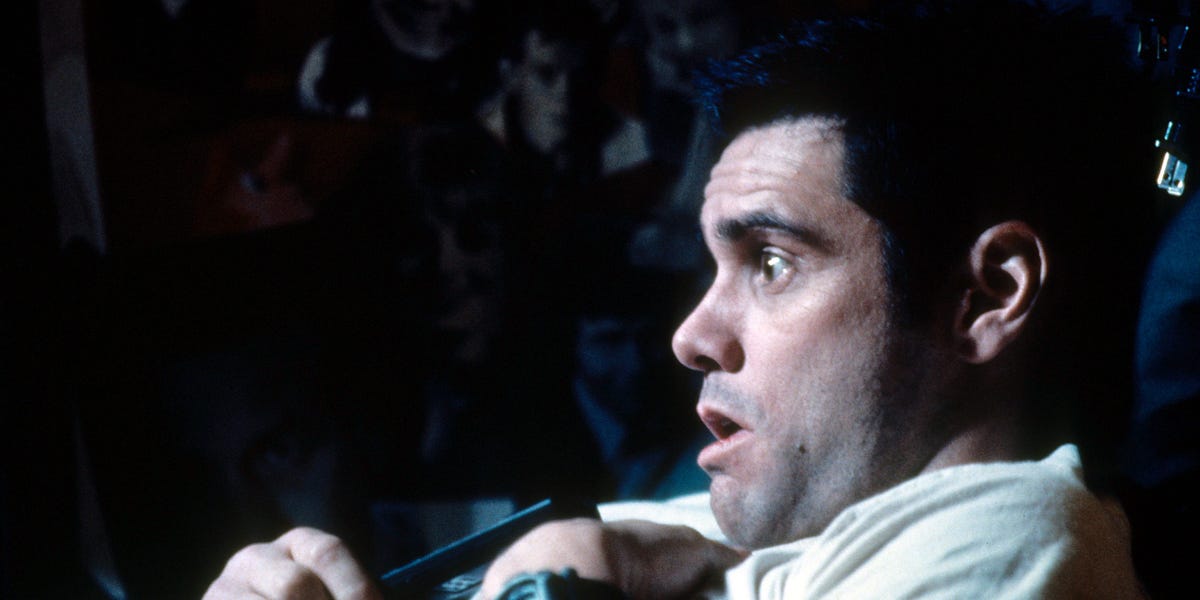cross-posted from: https://sh.itjust.works/post/3361168
Sooner or later, everything old is new again.
We may be at this point in tech, where supposedly revolutionary products are becoming eerily similar to the previous offerings they were supposed to beat.
Take video streaming. In search of better profitability, Netflix, Disney, and other providers have been raising prices. The various bundles are now as annoyingly confusing as cable, and cost basically the same. Somehow, we’re also paying to watch ads. How did that happen?
Amazon Prime Video costs $9 a month and there are no ads. Oh, except when Thursday Night Football is on. Then there are loads of ads. And Amazon is discussing an ad-supported version of the Prime Video service, according to The Wall Street Journal. That won’t be free, I can assure you.
Paramount+ with Showtime costs $12 a month and the live TV part has commercials and a few other shows include “brief promotional interruptions,” according to the company. Translation: ads.
Streaming was supposed to be better and cheaper. I’m not sure that’s the case anymore. This NFL season, like previous years, I will record games on OTA linear TV using a TiVo box from about 2014. I’ll watch hours of action every weekend for free and I’ll watch no ads. Streaming can’t match that.
You can still stream without ads, but the cost of this is getting so high, and the bundling is so complex, that it’s getting as bad as cable — the technology that streaming was supposed to radically improve upon.
The Financial Times recently reported that a basket of the top US streaming services will cost $87 this fall, compared with $73 a year ago. The average cable TV package costs $83 a month, it noted. A 3-mile Uber ride that cost $51.69
A similar shift is happening in ride-hailing. Uber has been on a quest to become profitable, and it achieved that, based on one measure, in the most-recent quarter. Lyft is desperately trying to keep up. How are they doing this? Raising prices is one way.
Wired’s editor at large, Steven Levy, recently took a 2.95-mile Uber ride from downtown New York City to the West Side to meet Uber CEO Dara Khosrowshahi. When asked to estimate the cost of the ride, Khosrowshahi put it at $20. That turned out to be less than half the actual price of $51.69, including a tip for the driver.
“Oh my God. Wow,” the CEO said upon learning the cost.
I recently took a Lyft from Seattle-Tacoma International airport to a home in the city. It cost $66.69 with driver tip. As a test, I ordered a taxi for the return journey. Exact same distance, and the cab was stuck in traffic longer. The cost was $70 with a tip. So basically the same.
And the cab can be ordered with an app now that shows its location, just like Uber and Lyft. So what’s the revolutionary benefit here? The original vision was car sharing where anyone could pick anyone else up. Those disruptive benefits have steadily ebbed away through regulation, disputes with drivers over pay, and the recent push for profitability. Cloud promises are being broken
Finally, there’s the cloud, which promised cheaper and more secure computing for companies. There are massive benefits from flexibility here: You can switch your rented computing power on and off quickly depending on your needs. That’s a real advance.
The other main benefits — price and security — are looking shakier lately.
Salesforce, the leading provider of cloud marketing software, is increasing prices this month. The cost of the Microsoft 365 cloud productivity suite is rising, too, along with some Slack and Adobe cloud offerings, according to CIO magazine.
AWS is going to start charging customers for an IPv4 address, a crucial internet protocol. Even before this decision, AWS costs had become a major issue in corporate board rooms.
As a fast-growing startup, Snap bought into the cloud and decided not to build it’s own infrastructure. In the roughly five years since going public, the company has spent about $3 billion on cloud services from Google and AWS. These costs have been the second-biggest expense at Snap, behind employees.
“While cloud clearly delivers on its promise early on in a company’s journey, the pressure it puts on margins can start to outweigh the benefits, as a company scales and growth slows,” VC firm Andreessen Horowitz wrote in a blog. “There is a growing awareness of the long-term cost implications of cloud.”
Some companies, such as Dropbox, have even repatriated most of their IT workloads from the public cloud, saving millions of dollars, the VC firm noted.
What about security? Last month, Google, the third-largest cloud provider, started a pilot program where thousands of its employees are limited to using work computers that are not connected to the internet, according to CNBC.
The reason: Google is trying to reduce the risk of cyberattacks. If staff have computers disconnected from the internet, hackers can’t compromise these devices and gain access to sensitive user data and software code, CNBC reported.
So, cloud services connected to the internet are great for everyone, except Google? Not a great cloud sales pitch.
Capitalist greed comes for all novel ideas.
They’re broader examples of enshittification.
Doctorow used the term specifically to refer to social media, but in a broader sense, virtually all companies are subject to it if they’re successful enough.
What’s going on behind the scenes, always, is that the company shifts primary focus from establishing/growing a customer base to making money with which to pay executive salaries and shareholder dividends. That becomes the all-consuming goal, and everything else is secondary.
So, for example, any advantage there might once have been in value vs. cost vanishes, since one of the fundamental strategies for maximizing revenue is to offer the least possible value for the highest possible price.
If anything, with things like streaming and ride-sharing, it was more certainly the case not only that they’d do that, but that they’d do it relatively quickly, since they didn’t even have to experiment to find the specific levels of poor service and high price that people were willing to tolerate, since the industries they displaced had already found them.
Absolutely!
Once you get the enshittification concept, you can see it everywhere. Gives the whole drive to privatize everyone of the last few remaining public services (mail, schools, aerospace, …) a whole new taste, doesn’t it?
Lines up nicely with the conservative strategy of sabotaging and defunding public services as much a possible, so they can say “see government doesn’t work!!!”
I don’t get how streaming is just as expensive as cable. You can always cancel one and get another for a few weeks and switch back, nobody is that desperate to have all of them at all times
Plenty of people clearly do have many concurrently and do not switch. To claim it’s obviously otherwise is going to need something to back it up.
Besides, how long do you think that strategy will last? Is that strategy even applicable to people wanting the convenience of browsing multiple services? To families with multiple people using various services all at literally the same time?
It’s a benchmark of cost either way. Streaming services didn’t used to be like this, now they are. Splitting hairs about how you can spend a bunch of extra time gaming systems actively trying to keep you from doing that isn’t exactly a fantastic argument.
Yea the point about streaming services is horse shit. Installing cable and changing providers is far far worse then streaming today, even if the price was the same (it’s not even close unless you sub to essentially every single service)
Jellyfin + Synology + own a fucking car with the money you save on streaming services now.
On the plus side it’s super easy to start and stop a streaming service (no phone calls needed) and they are ala carte so no need to have more than one at a time if you choose. Cable never had that and still doesn’t have that.
And for those of us who dgaf about sports, we’re no longer forced to pay for ESPN and the like on basic cable.
And since we don’t care about live tv packages either (since sports is about the only reason to have it) we’re still coming out ahead. For now.
Amen brother! 👍
I don’t think it’s fair to put all the blame on Uber for their prices going up, given that so many places have been creating new taxes and regulations intended to extract money from Uber.
To be fair, uber often got around many of the taxes and regulations others in the transportation industry faced such as the NYC taxi medallion. A lot of the added taxes were simply bringing them inline with the rest of the industry, they were price competitive because they had less overhead due to the lack of regulation and operated at a loss. This was all part of their customer acquisition plan. I still remember the first summer lyft was a thing around here that’s all I took because it was artificially cheap to try and attract customers.
deleted by creator
Gotta hit ya with the 🤓akshually🤓, Uber had never made a net profit until this past quarter, and supposedly its stock is still expected to fall anyway.
To be fair I don’t know enough to say that the price increase is good, considering everyone I know stopped using uber because of the prices. But surprisingly they must have figured something out for the first time.
Uber makes plenty of money
This isn’t true, actually.









